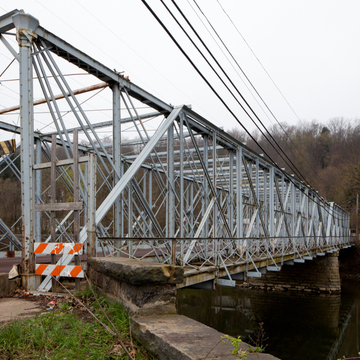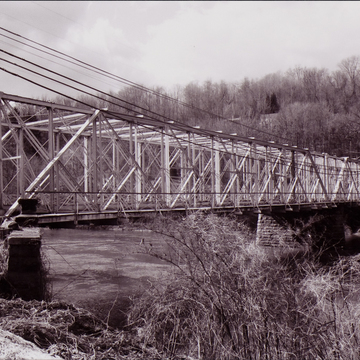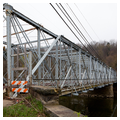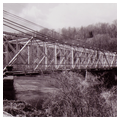This is a double-intersection Whipple truss bridge that was strengthened by a Baltimore truss in 1912, to make the transition from carrying wagons to carrying trolley cars and, later, automobile traffic. The earlier iron, pin-connected bridge was built by a New Brighton, Pennsylvania, company and is unique among the many iron and steel bridges crossing French Creek. The two truss systems, layered over each other, appear weblike when one is crossing the bridge; the corner ornament of stars and circles provides a whimsical touch.
A Whipple truss, patented in 1847, is a type of Pratt truss (a truss one drives through that consists of verticals and diagonals) in which the tension-bearing diagonals cross over two panels of the bridge, rather than the standard single panel as in most Pratt trusses. The Baltimore truss, introduced in 1871 by the Baltimore and Ohio Railroad, adds smaller diagonals to subdivide each panel. Here, then, is a bridge within a bridge, since the engineers of Albion, Pennsylvania, simply encased the older Whipple truss within the newer Baltimore truss. The bridge has been closed to traffic while its stability and fate are debated.





